Summary
- Steer clear of heavy and bulky items that add visual weight to open shelving.
- Avoid styling floating shelves with generic knicknacks that don’t serve any aesthetic or practical purpose.
- Skip fragile and breakable objects such as stemmed glassware that also requires constant maintenance to keep dust and grease at bay.
Well-styled open shelves can double as decor while offering an airier look than cabinetry. But choosing open shelving is a commitment that involves maintenance such as constant tidying, regular cleaning, and clever organization.
Avoid storing the items below on open shelves to keep them looking stylish rather than cluttered.
Heavy Objects
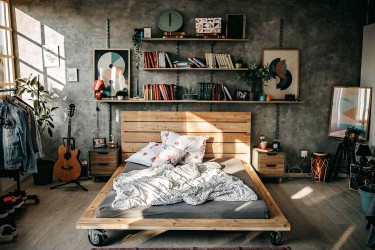
Pekic / Getty Images
Style floating shelves with lightweight items that won’t add visual weight or do any damage if they get knocked over. This is particularly important if you are styling open shelving over a bed, or in a home with children or pets. Trade items such as hardcover books or heavy decor objects with natural textures such as small bouquet of dried flowers for an organic look.
Want more design inspiration? Sign up for our free daily newsletter for the latest decor ideas, designer tips, and more!
Too-Small Objects
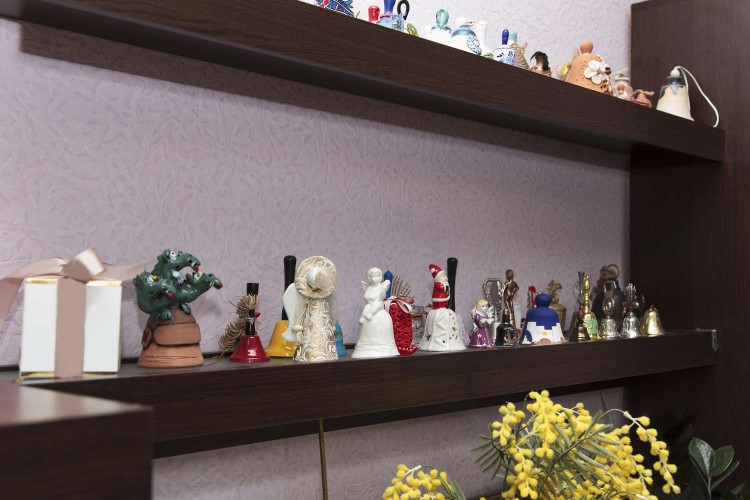
Credit:Mariana-Rusanovschi / Getty Images
When choosing what to store and display on open shelving, don't forget the importance of scale. While bulky items take up too much visual space, a jumble of mini figurines will end up looking like a blur of clutter. Choose items that are scaled to make a visual impact—fewer items with a mix of sculptural shapes and heights will look more intentional.
Useless Knicknacks

ninavartanava / Getty Images
Avoid generic doo-dads that serve no purpose other than to take up space. Display items that you find personally meaningful or beautiful to enhance the look and feel of your living room, but resist shelf-fillers like mass-produced knickknacks that read as random clutter.
Bulky Appliances

Frazao Studio Latino / Getty Images
Large, bulky, or unsightly appliances have no place on open shelving in your kitchen. Store blenders, food processors, pasta makers, and other functional items behind closed doors in an appliance garage to keep them accessible but hidden when not in use.
Packaged Food
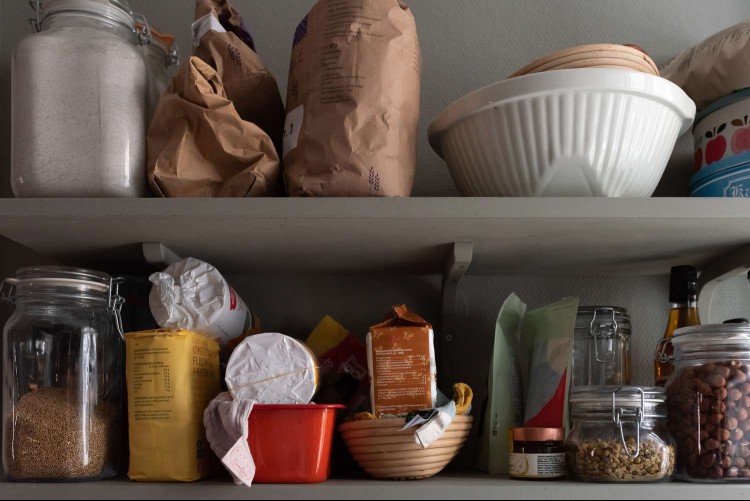
Dorte Fjalland / Getty Images
Don’t line open shelves in a walk-in pantry with cereal boxes, baking supplies, or other packaged food in original containers. Invest in a set of simple Mason jars and decant cereal, flour, sugar, and other items for a tidy look. This will help you survey your inventory and keep pests at bay.
Medicine Bottles and Makeup
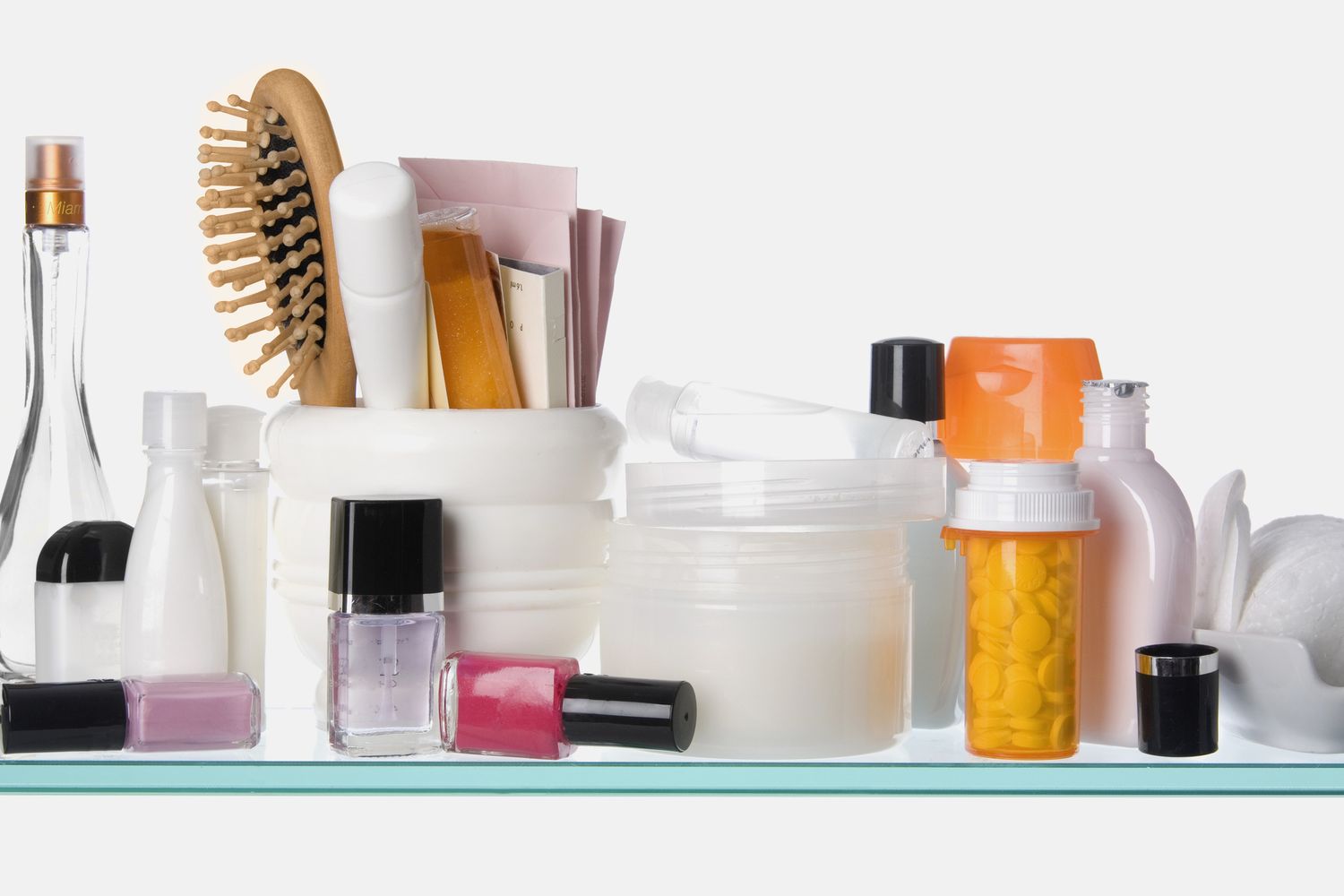
Glowimages / Getty Images
Store medications and cosmetics in a bathroom vanity drawer or a mirrored medicine cabinet above the sink. If your small bathroom lacks storage, conceal these small practical everyday items in lightweight woven baskets to keep open shelving from looking disheveled.
Fragile Glassware
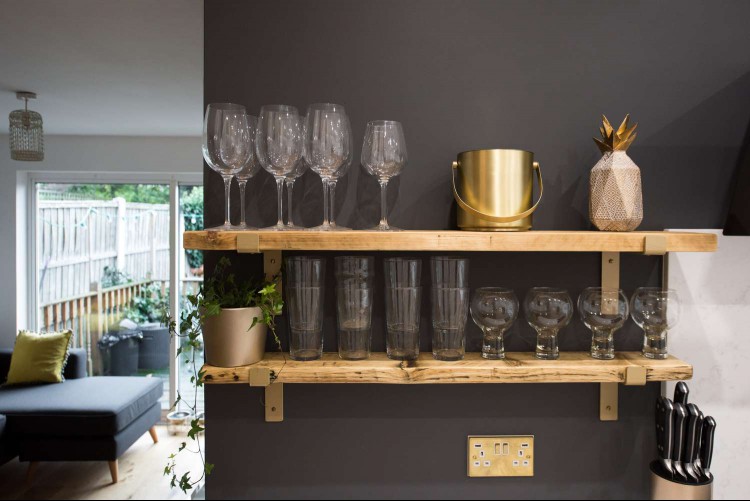
John Keeble / Getty Images
Delicate glassware is a magnet for dust and grease, and a slip of the hand can cause them to drop and shatter. While glassware such as wine glasses or champagne coupes can look pretty on open shelving, it’s more practical to store them behind glass cabinet doors.
Heavy Dishware and Cookware
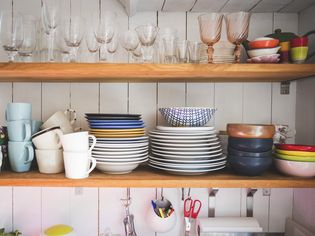
Maskot / Getty Images
It can be practical to store everyday dishware or cookware on open shelving, but it often leads to a crowded look. Floating shelves have weight limits and narrower widths that can make storing large sets of plates, bowls, mugs, and other items a challenge. Hang pots and pans on a wall rack instead for a homey feel.
